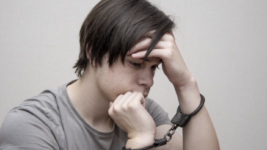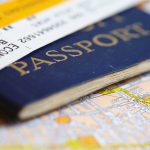Can Children Be Placed on The Child Sex Offender Register

Sexual offences against children are considered as some of the most serious criminal offences in our state, creating public outrage and leading to calls for not only heavy punishments, but mechanisms to reduce the likelihood of future offending.
That being the case, there’s a great deal of support for the New South Wales Child Protection Register, which monitors people who have been convicted of such offences.
But what if the perpetrator of the crime was a child themselves at the time? Would they end up on the register?
Here’s an outline of the rules.
The New South Wales Child Protection Register
The Child Protection Register is a list of people who have been sentenced for “registrable offences”.
Registrable offences are grouped into:
- Class 1 offences encompassing convictions for murdering a child, any offence involving sexual intercourse with a child and other serious child sexual offences.
- Class 2 offences encompassing convictions for manslaughter or causing serious harm to a child, kidnapping offences, offences relating to obscene exposure, procurement and grooming offences against children, child sex offences committed overseas and other mid-range child sexual offences.
The time a person spends on the register depends on the offence committed.
Class 1 offenders are on the register for 15 years, whilst Class 2 offenders are on the register for 8 years.
If a person commits an offences whilst on the register, they will remain on the register for life.
The register keeps track of a lot of personal information about those convicted of a registrable offence. As well as basic details such as the name, date of birth and address of a person, the register also includes:
- The names and birth dates of any children who live with the offender;
- The nature of the persons employment, name of employer and address of the work premises;
- Details of any club or organisation the person is affiliated with, which has child membership or participation;
- The make, model, colour and registration number of any car owned or generally driven by the person;
- Any tattoos or distinguishing marks that the person has (including ones that have been removed);
- Whether the person has ever been found guilty of a registrable offence (or equivalent) in a foreign jurisdiction, or was subject to a corresponding child protection registration order
- If the person has been in government custody since they were sentenced or released in relation to the registrable offence, any details of where or when the custody occurred;
- If the person intends on leaving NSW more than once a month, they must specify the reason for travelling and the destination;
- Details of any carriage service that is used, or intended to be used, by the person (for example, telephone and Internet);
- Details of any internet service provider used or intended to be used by the person;
- Details of any Internet connection used or intended to be used, such as whether the connection is wireless, broadband, ADSL or broadband; and
- Details of any email addresses, Internet user names, instant messaging user names, chat room user names or any other name or identity used by the person to communicate through the Internet or other electronic communication service
The register is only accessible to police officers and is used to monitor registered persons.
The register is not available to the public, however occasionally lists of registered persons “leak” and find their way onto the internet.
People on the register must regularly report to police about changes in their information.
They must also meet annually with police to discuss their circumstances. High-risk sexual offenders may also be monitored such as through the use of GPS trackers.
Section 17 of the Child Protection (Offenders Registration) Act 2000 (NSW) provides an offence should a person fail to comply with their reporting obligations, carrying a maximum penalty of a $55,000 fine or 5 years imprisonment or both.
Can Child Offenders End Up On The Register?
The placement of child perpetrators on the Child Protection Register is highly controversial, and a number of safeguards are in place to ensure this only occurs in limited circumstances.
Section 3A of the Child Protection (Offenders Registration) Act 2000 makes it clear that a child will not be a “registrable person” under the Act, merely because they have committed:
- A single offence involving sexual touching or a sexual act, or
- A single offence under section 91H of the Crimes Act 1900 or an offence of producing, disseminating or possessing child abuse material (in whatever terms expressed) under the laws of a foreign jurisdiction, or
- A single offence under section 91J (1), 91K (1) or 91L (1) of the Crimes Act 1900 , or
- A single offence (including an offence committed under the laws of a foreign jurisdiction) that falls within a class of offence the regulations prescribe for the purposes of this subparagraph, or
- A single offence an element of which is an intention to commit an offence of a kind listed in this paragraph, or
- A single offence of attempting, or of conspiracy or incitement, to commit an offence of a kind listed.
Further, section 3C of the Child Protection (Offenders Registration) Act 2000 makes it clear that a court can make an order excluding a child from the register if:
- The person has not previously been convicted of any other Class 1 offence or Class 2 offence; and
- The court does not impose in respect of the offence- a sentence of full-time detention, or a control order; and
- The court is satisfied that the person does not pose a risk to the lives or sexual safety of children.
In short: a child can be placed on the Child Protection Register, but only if certain criteria are met.
Can A Child Remove Their Name?
Once a person’s name has been placed on the Child Protection Register it will remain there unless the finding of guilt for the registrable offence is quashed or set aside, or the child offender is sentenced in a different way so as to no longer fit within the criteria for registration.
Generally, once a child ends up on the Child Protection Register they must wait for their registration time to pass.






